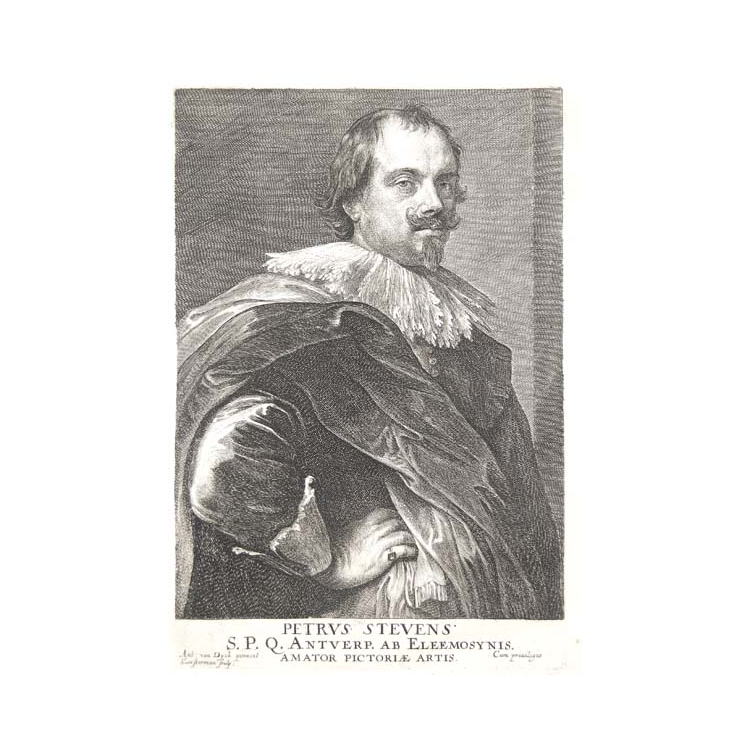



| Reference: | 34133 |
| Author | Lucas VOSTERMAN |
| Year: | 1645 ca. |
| Measures: | 155 x 235 mm |


| Reference: | 34133 |
| Author | Lucas VOSTERMAN |
| Year: | 1645 ca. |
| Measures: | 155 x 235 mm |
Etchings with engraving, printed on contemporary laid paper, “jester” watermark with margins, in excellent condition.
From the famous Icones principium, virorum, doctorum, pictorum, chalcographorum, by Anton van Dyck, printed for the first time in Antwerp around 1640.
A famous and important work, a real monument of the Flemish engraving art of the XVIII century, containing the biographies and portraits of the famous artists Van Dyck had met and with whom he had worked.
The artist realized many paintings and drawings with these portraits, which he then decided to publish commissioning the engraving part to the best artists of his time, such as Bolswert, Pontius, Vorsterman, de Jode, Hollar, who had also been his schoolfellows in Rubens’ workshop.
Lucas VOSTERMAN (Bommel, 1595 - Anversa, 1675)
|
Engraver and art dealer. He began to practise as an engraver when he was only 12 years old. He joined Rubens's studio c. 1617-18 and in 1620 became a master. Rubens clearly took on the sensitive young Vorsterman with a view to training him to reproduce his paintings, having realized the potential profits to be made from reproductive engravings of his work. Vorsterman's talent doubtless encouraged Rubens to intensify and guarantee his production of engravings by attaining exclusive licences in France, the northern Netherlands and the southern Spanish Netherlands. It is possible that the young Anthony van Dyck provided drawings after Rubens's paintings for the engravings by Vorsterman (Bellori), although some have been attributed to Vorsterman himself or to the studio of Rubens. Under Rubens' guidance, Vorsterman developed his burin technique in the period 1618-20, using a complex method of building up numerous layers of lines of varying thicknesses in order to do full justice to the colouring in Rubens's paintings. Vorsterman was able to reproduce the expressiveness and nobility of Rubens's figures in a way that virtually no other engraver equalled.
|
Lucas VOSTERMAN (Bommel, 1595 - Anversa, 1675)
|
Engraver and art dealer. He began to practise as an engraver when he was only 12 years old. He joined Rubens's studio c. 1617-18 and in 1620 became a master. Rubens clearly took on the sensitive young Vorsterman with a view to training him to reproduce his paintings, having realized the potential profits to be made from reproductive engravings of his work. Vorsterman's talent doubtless encouraged Rubens to intensify and guarantee his production of engravings by attaining exclusive licences in France, the northern Netherlands and the southern Spanish Netherlands. It is possible that the young Anthony van Dyck provided drawings after Rubens's paintings for the engravings by Vorsterman (Bellori), although some have been attributed to Vorsterman himself or to the studio of Rubens. Under Rubens' guidance, Vorsterman developed his burin technique in the period 1618-20, using a complex method of building up numerous layers of lines of varying thicknesses in order to do full justice to the colouring in Rubens's paintings. Vorsterman was able to reproduce the expressiveness and nobility of Rubens's figures in a way that virtually no other engraver equalled.
|